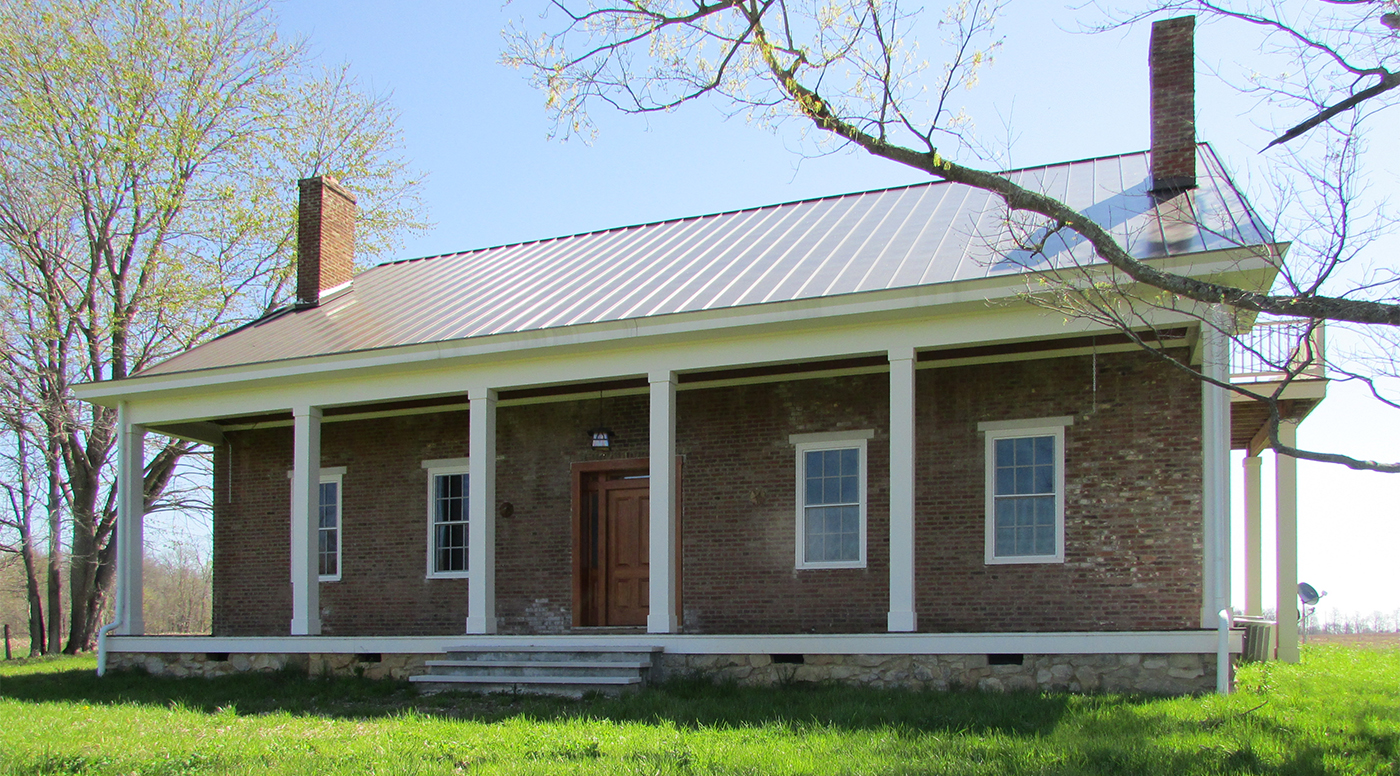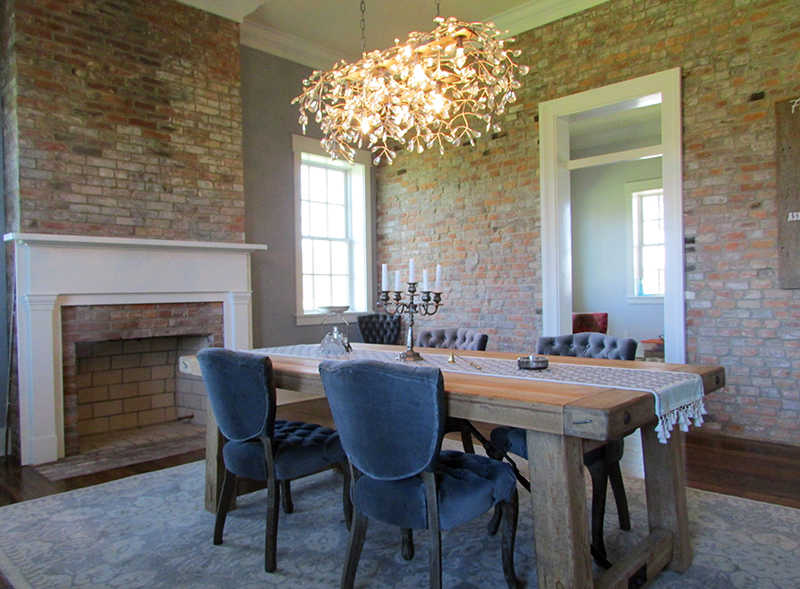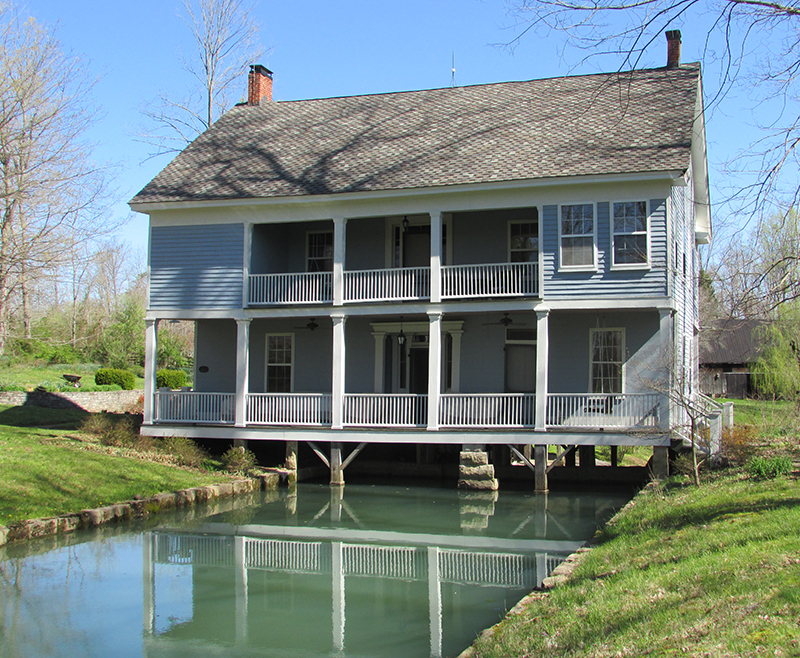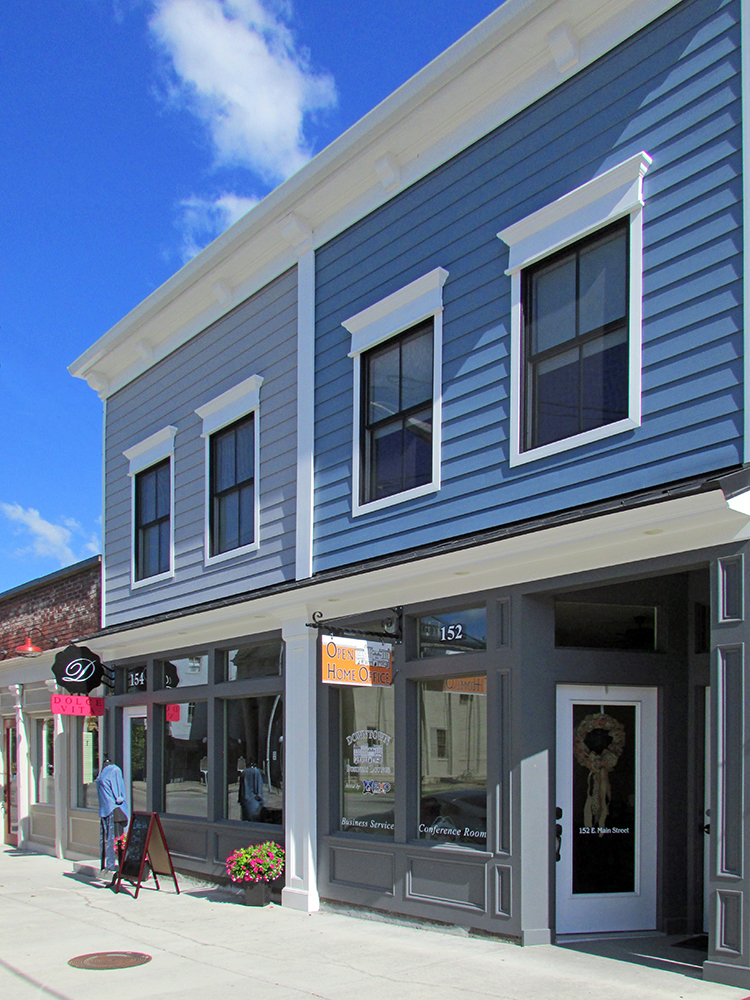NEWS
Celebrate Preservation Success Stories in Southern Indiana
On October 23, join us to explore historic landmarks in and around Salem
and applaud inspiring preservation success stories.

Southern Indiana Charm
Join us at our Salem Stroll on October 23 to applaud four remarkable preservation success stories, as our Southern Regional Office and Southeast Field Office present the annual Rosemary Prentice Awards. We give the awards, named in honor of Clark County’s late preservation advocate, annually to recognize outstanding projects and people across the fourteen-county region.
Two winners restored landmarks in rural Washington County. John Rodgers and Melissa Hinshaw bought the c. 1850 John Bowman House in 2012 as a weekend getaway when it was a shell of its former self. The house had been empty since the early 90s – other than the buzzards that had taken up residence – with holes in the roof, crumbling plaster, and collapsing floors. But the brick walls were still fairly sturdy, a few original interior features survived, and the house offered a lovely rural location. Working with architect Ron Stiller and general contractor Mark Werncke, they undertook an ambitious rehabilitation that saved what was left of the original portion of the home and incorporated a large rear addition, bringing the house back from ruin and ensuring a bright future.

John Rodgers and Melissa Hinshaw’s renovation of the Bowman House highlights original features, including brick walls and fireplaces.
Fishing From the Porches
Bob and Pam French restored the Campbell-Gill Farm, about a mile away from the Bowman House outside Pekin, and a much different challenge. Entrepreneur James Campbell built the house about 1863, intending to operate it as an inn. To attract fishermen, he constructed it over a spring, which was dammed to create pools under and around the house. He aimed to allow guests to fish while seated on the long porches.
Novel as this idea was, it did not lead to the inn’s success, and the place was soon converted to a single family home. When the Frenches acquired the property in 1977, structural issues caused by the moisture required them to buttress the foundation. They also revamped the dam, providing greater protection for the house from floods, rebuilt the roof structure and added hurricane clips, repaired rotted porch elements, and rebuilt the stone springhouse and stone-lined fishing pond based on memories of a former owner. And along the way for the past 39 years, they have maintained the original fabric and character of the house.

The 1863 home of Bob and Pam French was built over a spring so guests could fish from the porches.
Bringing Back the Block
We will also present an award to Carter Management Company for its transformation of a long-vacant half-block in downtown New Albany. The Carters – twin brothers Don and Ron Carter and Ron’s son Andrew – purchased the buildings at 152, 154 and 156 East Main Street in June 2014. The buildings at 152-154 were constructed in 1834, making them likely the oldest remaining frame commercial structures in the city.

The buildings were extremely deteriorated, with the rear portion collapsed and a steel cable holding up what was left. They demolished the worst areas and completely rehabilitated the rest, including new roofs, all new HVAC, plumbing and electrical systems, new storefronts, and restoration of steel casement windows and historically accurate replacement windows.
They incorporated salvaged elements from the buildings — from huge wooden beams and original flooring to massive stone foundation piers — into the new spaces. Taking advantage of the buildings’ basements and the large carriage barn on the site, the Carters created an inviting courtyard behind the buildings, to tie the development now known as Underground Station together. The project created eleven new commercial spaces and three apartments, all occupied.
At our Salem Stroll we will also honor Amack’s Well Coffee House in Batesville, where the Community Church of Greensburg and Batesville transformed a turn-of-the-century downtown building a local hub for arts, service, and community outreach. Read more about Amack’s Well here.
For more information on any of the award winners, contact Indiana Landmarks’ Southern Regional Office, 812-284-4534 or south@indianalandmarks.org. To reserve your tickets to the Salem Stroll, visit https://salemstroll.eventbrite.com.
Stay up to date on the latest news, stories, and events from Indiana Landmarks, around the state or in your area.
